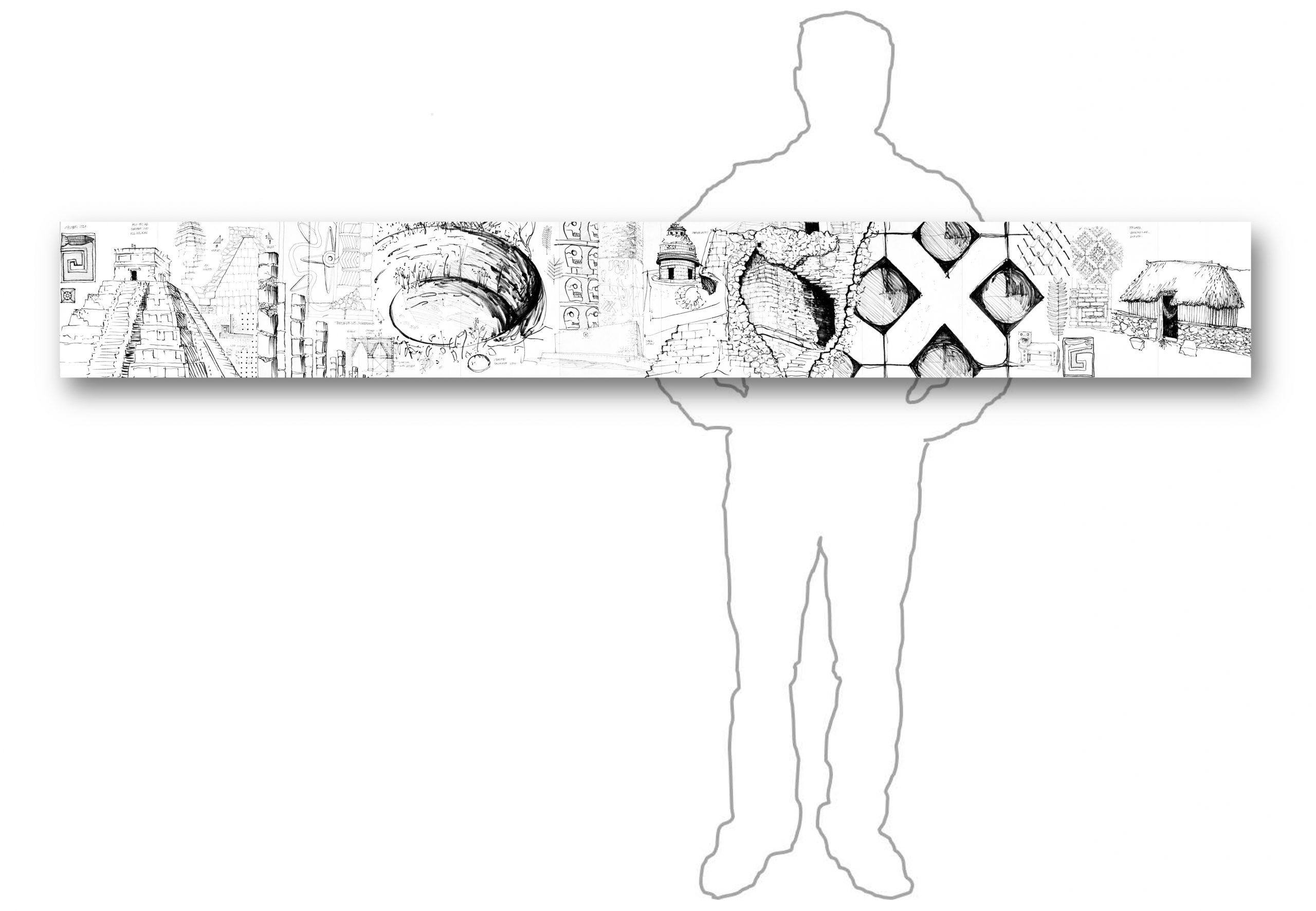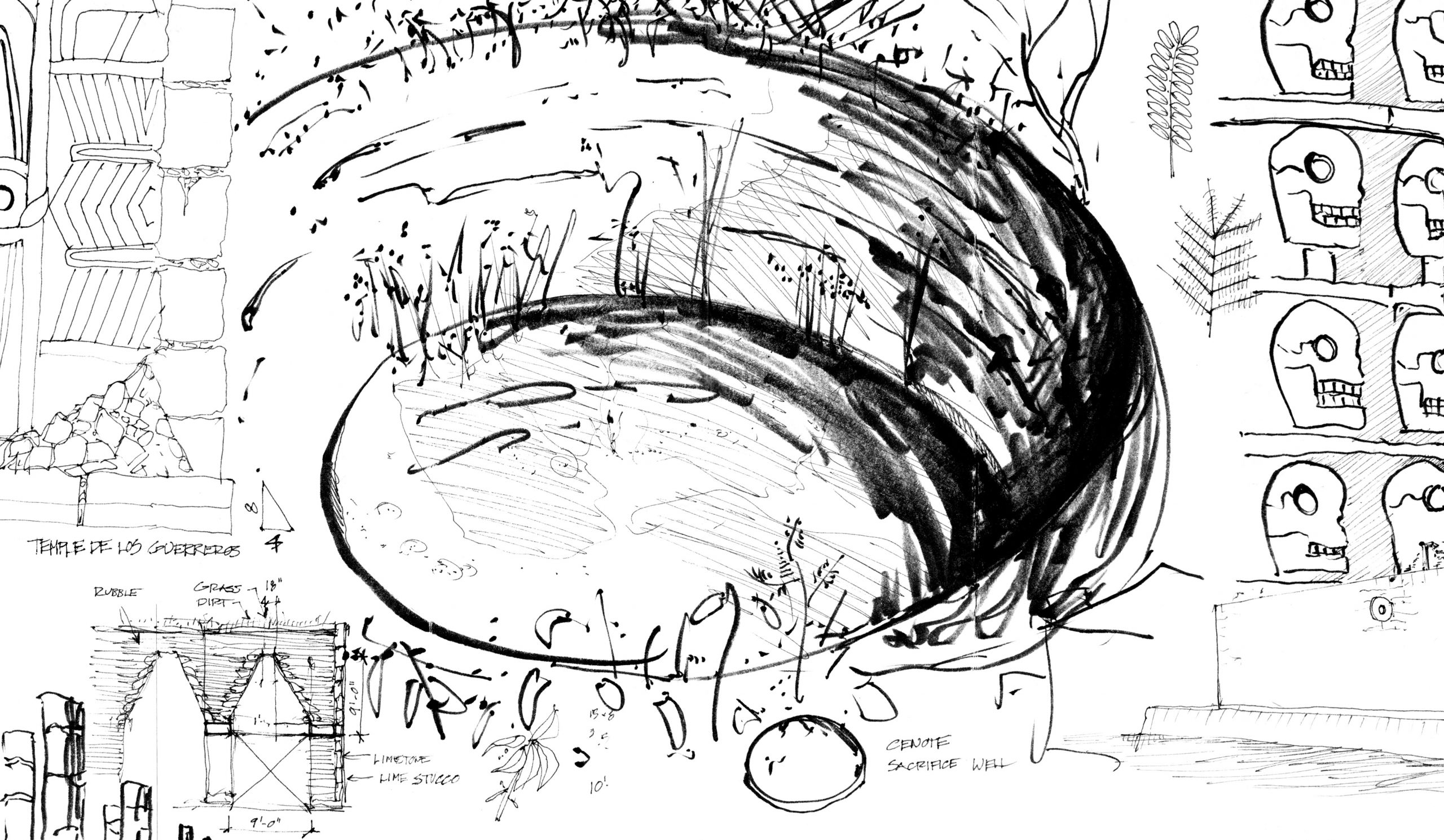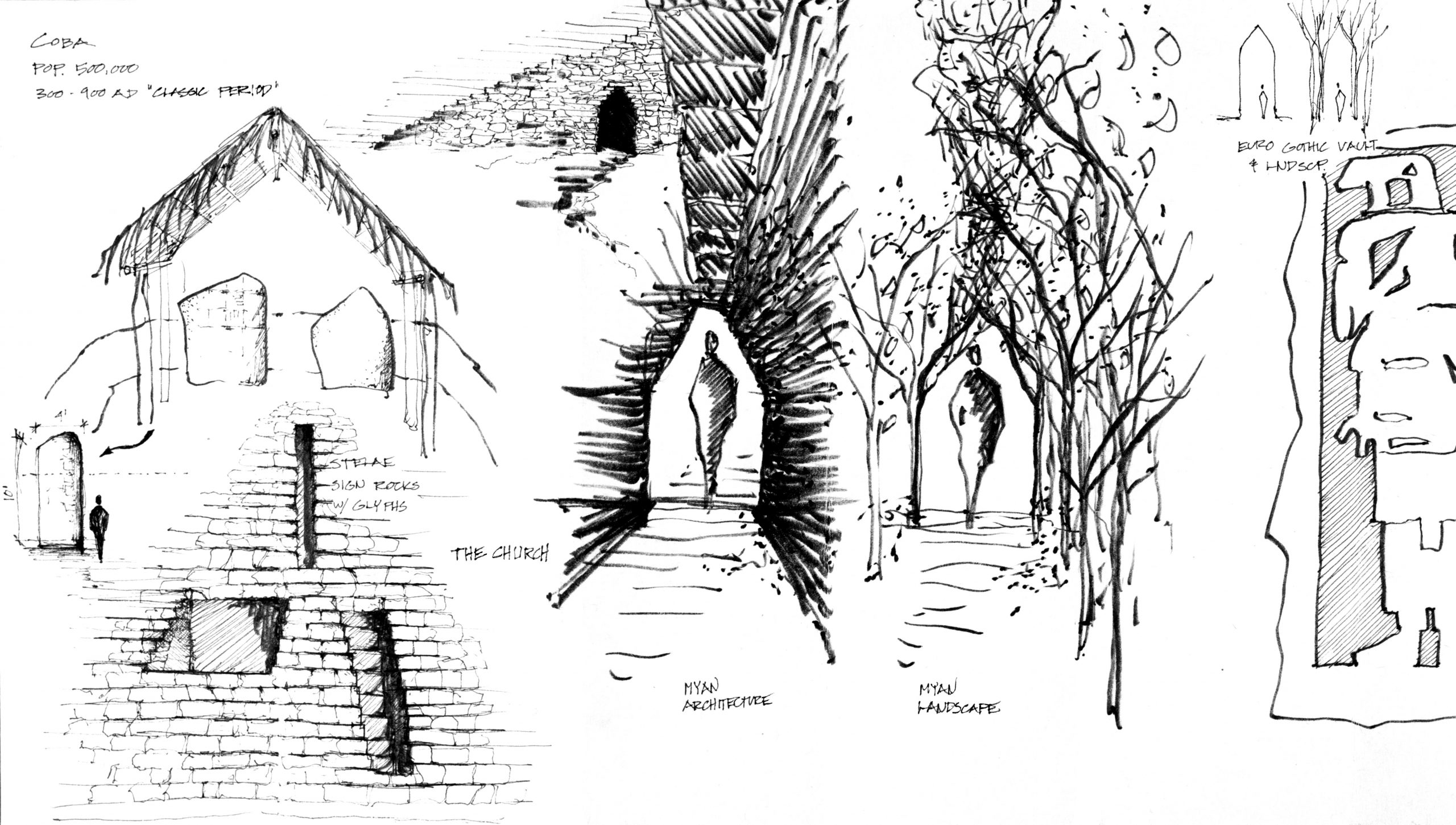8.2.Mexico-1-detail-a Mayan ruins – Highlights Relevant to Sustainable Design:
We can learn from history about how to avoid depleting natural resources and cultural collapse.
The Yucatan Peninsula in Mexico was home to the Mayan people. Two thousand years ago, this highly sophisticated culture not only developed calendars and massive step pyramids but also observatories and major sports venues that rivaled the architecture of Egypt and Rome.
One of the mysteries of the Mayan ruins is why the cities did not continue to flourish. Some research indicates that the large cities had several hundred thousand residents, so it is unusual on the world stage that expansion would not continue. Thermal imaging cameras have revealed foundation stones for structures that sprawled out way beyond what was initially perceived as the city limits. This early example of suburban sprawl also demonstrates a pattern of clear-cutting the indigenous planting and trees to make room for the growing populations. Some further research indicates that the lack of planting may have left the Mayans vulnerable to flooding and mudslides, given that the plants were no longer available to absorb the water. In flooding situations, disease can more quickly contaminate the water system and lead to sickness and death at accelerated levels. The rich Mayan culture may have grown too big too fast and set a fatal path to their own extinction.
Dr. Seuss in his children’s book The Lorax painted a clear picture of the dangers of cutting down the Truffula trees, and the once thriving business and community built by the Once-ler all but vanished. There are most likely many contributing factors to cultural collapse, but when we talk about “save the planet,” we really just need to perhaps “save ourselves.” Finding cost-effective ways to slow the depletion of natural resources and fossil fuels makes sense for today and tomorrow.
8.1.Mexico-1-Horizontal-with-Figure – Mayan ruins
The figure outline in this image is for scale to illustrate the size of the fold-out field drawing. The descriptions of certain key elements and insights are included with the accompanying drawings in this section.

Author and illustrator: Charlie Szoradi is an architect, inventor, and the CEO of Independence LED Lighting. He writes about many other topics related to Mayan ruins through his extensive travels around the world.
If you have found this posting online, it is an excerpt from Mr. Szoradi’s book Learn from Looking that served as the inspiring seed content for this drawing share resource. For additional drawings and insights on ancient architecture like the Mayan ruins, we hope that you enjoy exploring LearnfromLooking.com. You can search via general terms such as sustainability as well as narrower terms such as Mayan ruins an the Yucatan Peninsula.



